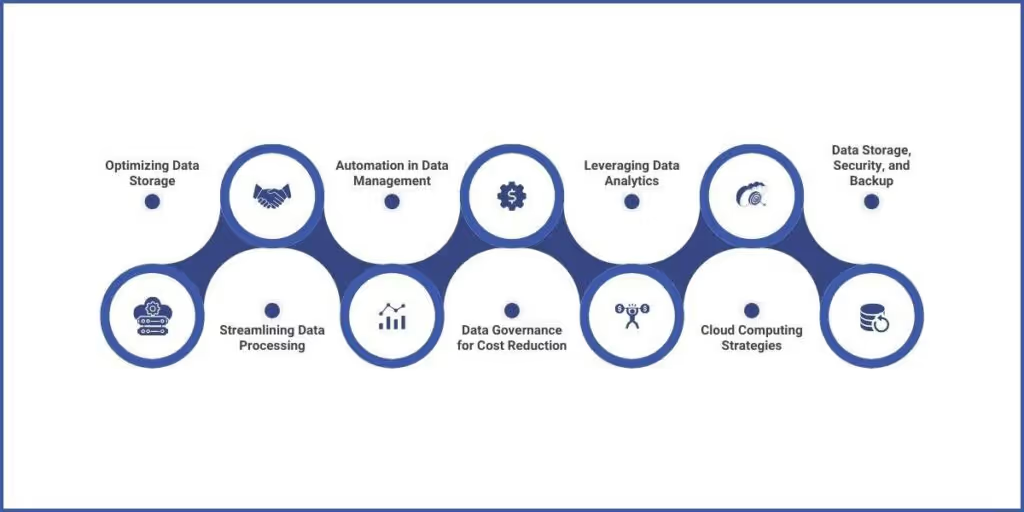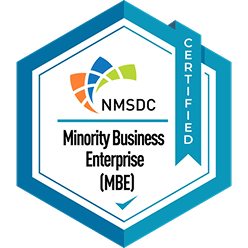

Managing data efficiently is no longer a choice but a critical business survival skill. Companies today generate terabytes of information daily, yet storing, accessing, and protecting it often feels like guiding an endless maze. The pain points? Skyrocketing storage costs, sluggish access speeds, and the ever-looming risk of data breaches. Without a clear strategy, data management can drain budgets and overwhelm even the most seasoned teams.
But it doesn’t have to be this way. By embracing cost-effective data management techniques and tools, we can turn these challenges into opportunities for growth. From cloud-based solutions that reduce expenses to automation tools that simplify workflows, this article reveals actionable strategies to help you optimize your approach and stay ahead in the data-driven age.

Organizations that adopt strategic, cost-effective practices can unlock significant value while keeping operational expenses in check. By using innovative techniques, businesses can transform their data management processes into a powerful asset, ensuring both agility and sustainability in a competitive landscape. Let’s get into actionable strategies designed to optimize data handling and deliver measurable results:
1. Optimizing Data Storage
Cutting unnecessary storage costs starts with smart data decisions. Many businesses hold onto redundant or outdated information without realizing how much it weighs them down. A recent case showed a mid-sized financial services company saving 35% on storage costs by removing duplicate files and compressing archives. Identifying and eliminating redundant data isn’t just cost-effective—it also speeds up retrieval times for active files.
Compression is another powerful tool. Reducing file sizes can maximize storage without needing expensive upgrades. For instance, retail companies handling large inventories compress product images to maintain quality while reducing storage.
Archiving infrequently accessed data saves money and boosts efficiency. Manufacturing companies, for example, archive old vendor data while keeping active files easily accessible. This keeps operations smooth without inflating costs.
Optimizing data storage is step one; processing it efficiently is the next challenge.
2. Streamlining Data Processing
Effective data management is the cornerstone of scalability, not just an operational benefit. Companies that are overloaded with redundant or unstructured data frequently experience missed growth opportunities, inflated expenses, and imprecise analytics. By utilizing more sophisticated tools and intelligent algorithms, businesses may cut down on processing time, minimize errors, and improve decision-making.
Consider deduplication as an excellent illustration. Due to duplicate entries in its inventory database, a mid-sized retail chain frequently had reporting problems and lost hours reconciling records. Using automatic deduplication software, the business cut processing time in half, reduced database size by 20%, and saved more than £25,000 a year.
Tiered storage strategies are another game-changer. Frequently accessed customer data is stored on faster, costlier platforms, while less-used data goes to cheaper options. A U.S.-based logistics company reported 30% lower storage costs by adopting this approach.
After streamlining processing, automation brings consistency and scalability to data management.
3. Automation in Data Management
Automation is revolutionizing data management by reducing human errors and eliminating repetitive tasks. It allows teams to focus on high-value activities that drive growth and innovation.
Tools like Power Automate and Zapier streamline workflows by seamlessly integrating processes. A retail firm used automation to simplify the reconciliation of daily sales data across multiple platforms. This approach significantly reduced manual effort and sped up decision-making processes.
Another key strategy is automating backups. A manufacturing business used daily cloud backups to protect important data automatically. This guaranteed adherence to legal requirements and protected operations during unplanned outages.
Strong data governance is the next step to reducing costs and improving efficiency.
4. Data Governance for Cost Reduction
Smart data governance ensures every bit of information adds value. By implementing strong data management practices, businesses can reduce costs tied to redundancy, inefficiency, and compliance risks. Establishing data retention and deletion policies prevents unnecessary storage costs, while regular reviews of data quality frameworks ensure accuracy. For instance, data classification schemes streamline management by identifying critical versus obsolete data, making it easier to allocate resources where they matter most.
Utilizing data analytics becomes the next logical step to make smarter decisions and reduce inefficiencies.
5. Leveraging Data Analytics
Data analytics enables organizations to turn raw data into impactful strategies. By using predictive analytics, businesses can allocate resources more efficiently, minimizing waste and planning with precision. For instance, retailers can forecast demand spikes and adjust inventory accordingly, reducing overstock costs while meeting customer needs.
Analyzing customer behavior provides deeper insights into preferences, helping companies personalize their offerings. A financial services firm, for example, could use analytics to identify high-value customers and tailor services that enhance retention.
The benefits of analytics amplify when paired with scalable and flexible cloud computing strategies.
6. Cloud Computing Strategies
Cloud computing enables cost-effective scalability with on-demand resources. Pay-as-you-go models eliminate the need for heavy upfront investments, allowing businesses to adapt quickly to changing demands. By utilizing cloud-native databases and managed services, teams can automate routine tasks, improving efficiency and reducing overheads.
A multi-cloud approach offers enhanced flexibility, ensuring systems remain resilient against outages or vendor lock-in.
Effective cloud strategies should always be complemented by robust data storage, security, and backup solutions.
7. Data Storage, Security, and Backup
Protecting your data is protecting your business. In an age where data drives decisions, safeguarding it should be a top priority. Secure storage systems help companies protect sensitive information from breaches and ensure compliance with industry regulations. Without robust measures, organizations risk costly fines and reputational damage.
Backup solutions are equally crucial. They ensure that businesses can retrieve their data quickly in case of unexpected events like system failures or cyberattacks. Cloud-based backups, for instance, provide flexibility, scalability, and cost-effective data recovery options.
Implementing strict compliance measures, such as encryption, access controls, and regular audits, can further reduce vulnerabilities and reinforce security. A single lapse in compliance could lead to severe consequences, including loss of trust and financial penalties.
Mastering cost-effective data management is key to driving efficiency, reducing costs, and delivering exceptional customer experiences. Techniques like secure storage, automation, and strategic analytics streamline operations and create opportunities for growth and scalability. With the right approach, data transforms from a liability into a competitive advantage.
At WaferWire, we specialize in creating tailored solutions that align with your business goals. Our team delivers sustainable results, from designing robust data governance frameworks to implementing scalable cloud strategies. With our expertise, you can ensure your systems meet today’s demands while staying prepared for the future.
Let’s shape your data management journey together. Contact us today to explore how we can help you achieve smarter, more cost-effective data practices.

